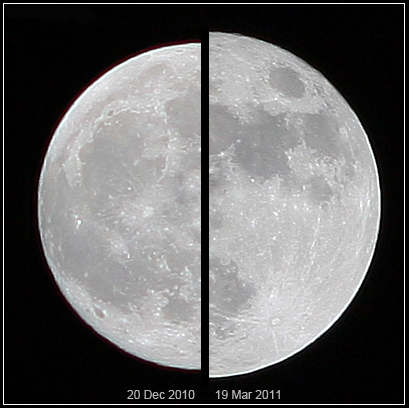Skygazing is Superlative Enough Without Hyperbole

No doubt you’ve all seen the hype about the upcoming so-called “Supermoon” on August 10th (Sunday night). And, if you haven’t run into the hype before, you’re probably wondering what all the fuss is about. I always wonder it, too. I’ve tried to see the difference between a regular moon and a Supermoon with my own eyes. And, either I have really crappy glasses (which I kinda doubt), or I just haven’t seen the difference. And, I doubt you would either, unless you could somehow magically arrange it so that a regular Full Moon and a Supermoon could appear in the sky at the same time. Then, you might be able to see the difference in size in how the Moon appears from Earth during one of these events.
Since you can’t do that, you just sort of have to look at the upcoming Supermoon and say, “Hmm… yeah…” and then wonder what all the fuss is about.
So, what’s a Supermoon? The correct term for the Full Moon we’re about to experience on Sunday is perigee-syzygy of the Earth-Moon-Sun system. The term “Supermoon” is not actually an astronomy term. It’s more of an astrological thing, where soothsayers and people who think the Sun, Moon, and stars are going to tell them when to get rich, who they’re going to marry, and so on, all hang out. It’s really nothing to do with the actual astronomy of the situation.
The reason we get a perigee-syzygy of the Earth-Moon-Sun system (or, if you like, “perigee-Full Moon”) is due to the distance between the Earth and Moon each month. The Moon follows an elliptical orbit around Earth, and that means it reaches perigee (its closest point to Earth) and apogee (the farthest point in the ellipse) during its orbit. A Supermoon occurs (coincidentally) when the Moon is full and also at perigee. This can make the Moon appear up to 14% larger than usual, and up to 30% brighter.
For this upcoming Supermoon, here are some things for you to know. It IS the closest encounter between Earth and Moon until September 28, 2015. There is one more Supermoon in 2014, on September 9th (so they’re not really that rare, are they), but it won’t be that close to us. Because the Moon is associated with tides, and it will be a bit closer than normal during the upcoming Supermoons, people who live along the ocean shorelines may see slightly higher-than-normal tides around the 10th. But, there is no scientific support for the idea that the Supermoon will cause earthquakes, eruptions, or other disasters (and some people LOVE to use unrelated physical events and phenomena to predict the most amazingly weird things). Just so you know, Earth undergoes many earthquakes each day, along with numerous eruptions, so there’s no reason to think that they would suddenly get worse due to a few percentage points’ difference in distance between Earth and the Moon during any given Supermoon.
My advice? Do what you’d do for ANY Full Moon! Hopefully, that involves going outside and watching the Moon rise, or studying it as it gets higher in the sky. There’s a lot of satisfaction in gazing at the Moon through binoculars or a telescope, so enjoy! And, don’t let any of the hype about the Supermoon cloud your enjoyment. It’s a natural phenomenon that actually occurs reasonably frequently (just not every month), and nothing to be worried about.
The Moon will have one unfortunate effect this next week (but totally unrelated to its Supermoon-ness): it will wash out the view of all but the brightest Perseid meteor showers. That annual shower peaks in the early morning hours of the 12th, and the Moon will be high in the sky around the same time. So, start checking out Perseids now, before the Moon gets to be too obnoxious. I talk about how to find them in this month’s Our Night Sky from AstroCast.TV.

Actually, the full Moon of December 20, 2010 was not a “plain old average full Moon.” It may not have been a Supermoon, but it was an amazing total lunar eclipse!
Good point. I was really driving more toward the difference in apparent size, not necessarily an eclipsed state. But, I’ve fixed that.